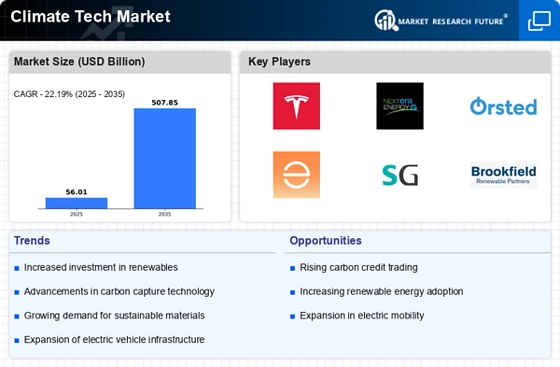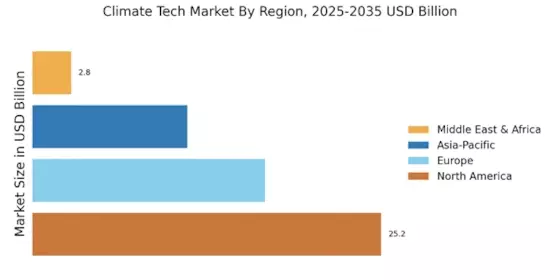The Climate Tech Market is projected to grow from USD 37.52 billion in 2023 to USD 227.72 billion by 2032, exhibiting a CAGR of 22.19% during the forecast period. Increasing government initiatives and regulations to reduce carbon emissions, rising adoption of renewable energy sources, and growing awareness about climate change are driving the market growth.
Some recent news and current affairs in the climate tech market include:- In January 2023, the US Department of Energy announced a $3.5 billion investment in climate tech startups.- In March 2023, the European Union launched a €10 billion climate tech innovation fund.- In May 2023, Microsoft announced a partnership with Climate Tech Market VC to invest in early-stage climate tech companies.- In July 2023, Amazon launched a new Climate Pledge Fund to invest in climate tech startups.
These developments indicate a growing interest in climate tech from both the public and private sectors. As the world continues to grapple with the challenges of climate change, the demand for climate tech solutions is expected to continue to grow in the coming years.
In May 2024, the world’s attention turned to Iceland as Climeworks unveiled the world’s largest Direct Air Capture (DAC) facility. This facility scrubs carbon dioxide from the atmosphere, thereby contributing to climate change mitigation measures through the reduction of CO2 concentration in the atmosphere. The initiative is aided by its collaboration with Carbfix, which mineralizes the extracted CO2 underground.
Ai Data Center Cooling Solutions: A partnership was announced in December of 2024 between Schneider Electric and Nvidia to work on Artificial Integration cooling solutions for data centers. The collaboration aims to promote and support Nvidia with respect to leveraging its hardware and provide sustainable Schneider Electric IT services.
December 2024 – GreenTech Innovations was involved in a merger with RenewEnergy Corp, a major company dealing with renewable energy, to quicken the venture into green hydrogen and green energies. This acquisition will enhance the positions of the two companies in the market as far as energy transition is concerned.
In November 2024 – EcoSolutions and CarbonClear Technologies, a company that leads in the industry of Carbon Capture and Storage Technologies utilized a merger to join their forces. Their strategic merger is expected to scale up their carbon reduction projects in the various industries.
In November 2024 – SolarTech Industries and CleanEnergy Networks decided to fry their assets and expertise in sun energy systems with energy storage systems. The aim of this merger/ acquisition is to offer comprehensive coverage for renewable energy infrastructure across the globe.
In October 2024 - Two companies, Sustainable Mobility and Future Transport Solutions became one. By this new merger, the entity is able to provide electric vehicle charging networks across borders.
In September 2024 - A new merger between Two businesses, Green Carbon and BioTech Energy was formed. This merger would help these firms to promote better agricultural practices and bio-based carbon reduction technologies. This collaboration aims towards the development of sustainable biofuels produced from waste.
In August 2024 - EcoBuild and Smart Cities Tech announced a merger focusing on sustainable urban development. The new entity will emphasize techniques of smart building together with the energy efficient infrastructural designs


















Leave a Comment